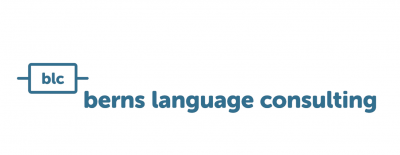Connected, automated and easy to use – that was our dream, which is now a reality.
In our blog today we share our experience with you about how we translated our website and what we learned from this project.
What did we want to achieve?
Last year we gave our website a new, fresh look and let it shine in a new splendor – at least the German side could shine and stand out. The English side stayed as it was, because we had to get to grips with some things first.
Because of the fact that the content of the old English site no longer coincided with the German site we either had to revise it in an equivalent way (visually and in terms of content) or retranslate it in a new style.
Given the dynamics of our site (including blogs), we thought the best way to create a new translation and to establish a sustainable process. So far so good, but how did it go on?
We knew we wanted to use the WordPress Multilingual Plug-in (WPML) to manage our English-language content, as we manage our entire website with WordPress.
It was also clear to us that we did not want to make the translations with WPML – for several reasons. One of these reasons was that we didn’t see the possibility of using a translation memory (TM) in the plug-in – and that was a must have for us!
First explored all the other options to choose the best option for us. So we did what you do best as a consultant for ourselves!
Therefore, test who binds himself forever...
But before we could decide on a tool, we had to think about what we want. Because, as our boss Kerstin Berns always says: “First the process, then the tool”!
Our dream translation process should be as automated and as simple as possible. We wanted to incorporate our terminology, use a TM, and pre-translate using machine translation, so we only had to post-edit. And most importantly, we definitely did not want to work with exports and imports!
As already said, since it was clear from the outset that we would be working with WPML on the WordPress side, we needed a translation tool that would not only be compatible with it, but could also handle all our other requirements – and at best in one place. It should also be possible to use the tool for other translations in isolation from website translation.
In short, what we needed was a TMS (Translation Management System). And since we are partnered with one of the market-leading TMS providers RWS, the decision was quickly made on their Trados platform, RWS Language Cloud, because all our requirements are covered there (spoiler: We are really very happy with our choice 🙂 ).
What else do you need?
Correct! Terminology, of course!
We took the opportunity to update and adapt our existing German terminology list, identify preferred and rejected terms, and finally add English, together with Marketing, Sales and our terminologist Jenny Seidel .
Thanks to our internal expertise, our terminology development was quick.
If you need help in building up your terminology, we are happy to help you with terminology problems and support you with terminology management.
The multilingual terminology can then be easily integrated into Trados (many different formats are supported, e.g. Excel). By the way, different terminology can also be maintained in TMS, for example for different departments. When configuring the translation workflow, you can then select the appropriate terminology.
Do not forget translation memory
If you already have a TM, you should definitely load it into Trados and use it for your own translation process. This saves time retranslating segments that have been translated before.
By the way, it’s not bad if you don’t have a TM yet! You can start one in the TMS that fills up automatically when a translation project has been translated and post-edited. This means that you can use your own TM from the second project at the latest, which always grows with you.
Speaking of growing along: In order to have a sustainable TM in the long term, it is worthwhile to muck it out and clean it up from time to time – e.g. with the BLC data toolkit! Please contact us!
Configuration is the key to a smooth workflow
In Trados, you can configure an individual translation workflow so that the translation is largely automated.
It defines different steps, distributes roles and permissions, and defines terminology, TM, and machine translation .

When a translation project arrives in Trados, it automatically goes through the first two steps of our workflow. During preprocessing, the text is first analyzed and compared with the TM. Matches are transferred directly from the TM. And then machine translated. In our case, a generic Machine Translation Engine from Language Weaver was used. Only then, we get into the game ourselves: We post-edit with the help of the online editor. You can also use your own terminology there. Finished projects are analyzed again and the TM is updated with the final segments.
But how do the website texts get from WordPress into our TMS and thus to the starting line of the workflow?
Stay connected...
… With the WPML plug-in, that’s not a problem. After successful installation, WPML can connect to Trados.
This is a little tricky, but don’t worry: WPML and RWS will guide you step by step through this process.
Once the connection is established, you can start immediately.
Ready Steady Go!
The WPML dashboard displays all existing website content and can be filtered by different categories.
There you can easily choose which content to translate and send this translation package to the Language Cloud, along with a deadline. The translation order is then sent to Trados, where it appears as a project – and the translation workflow described above can begin there.
If you need help, you know who to contact: berns language consulting!

[Translation] is probably the most complex type of event produced so far in the evolution of the cosmos […]
As Ivo A. Richards said he obviously didn’t know Trados, because it makes translation management a breeze.
But we would like to give you a tip at this point: Do not set the projects in Trados to completed under any circumstances , because otherwise WPML will not load the translations 😉 WPML would like to do this itself after it has retrieved the translations via the Connection.
Our conclusion
Translating website content has never been easier!
With Trados, the team can easily grab one of the translation projects. In the online editor, the translation or post-editing is easy and, above all, fast! And best of all, the pre-created terminology is also visible. The tool is also cloud-based, so it can be used from anywhere and by multiple people at the same time.
WPML makes it easy to manage multilingual content in a very clear way. You can commission translations directly from the WordPress backend and send them to the TMS. There, a partially automated translation workflow is run through and the finished translations are then sent back to WordPress. In WPML, you can then recheck the status and translated content before publishing it.
All in all, these are two powerful tools – and that is precisely why it may not always be easy to understand everything at the outset. But a big help is the provided documentation and the quick support (both from WPML and RWS). And the best for you:
As a RWS partner, we can make configurations and help you with your problems.
PS: This blog is also bilingual and it was super duper easy – you know how 😉





